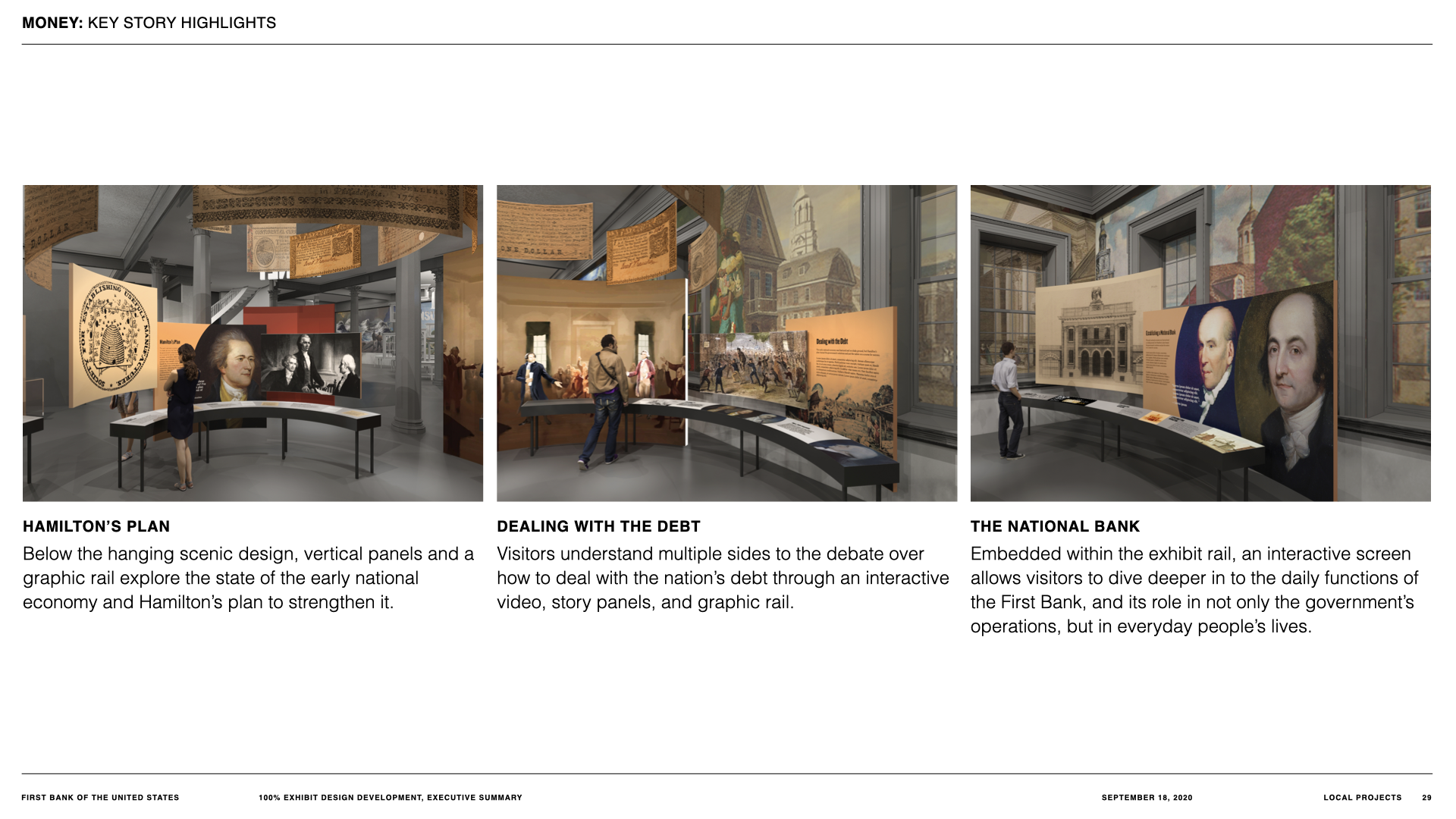first bank
Working closely with NPS’s historical team and park rangers, we co-developed an exhibition that strives to tell the whole story of the early American economy, through the lives of the everyday people it affected — not just the key players and policy makers.
voice of the early american economy
The exhibit features real, historic accounts of farmers, slaves, bankers and others who lived through this time, and looks to tell the story from their unique points of view. Featuring symbolic exhibition design, key themes, immersive historical recreations and hands on interactives, the exhibit design speaks to all ages and learning modes.
We worked closely with architects John Milner to design around the historic preservation requirements as well as to design to reveal the beauty of the original architecture. Built in 1791, the First Bank of the United States was the first federally chartered bank after the American Revolution, championed by Alexander Hamilton, the first Secretary of the Treasury.
…
My Role: Associate Creative Director
Collaborators: L’Rai Arthur-Mensah, Jenny Wong, Andrea Worby, Jenn McDermott, McKenna Cole, Anthony Dong, Vibha Agarwala
Exhibition
1.
Visitors enter the exhibit through an anamorphic hallway — encountering the date at which the story beings head on, and to the left and right, agrarian and industry images depicting the dueling economic philosophies of the time.
2.
The intro theater recreates a street in 1790 Philadelphia, where different residents can be overheard discussing the state of the post-revolution economy and how it has affected them.
3.
The main exhibition is conservation-conscious, and complements and reveals the historic architecture of the First Bank building. The floor in the rotunda space is an animated map showing the variables and expansion of the U.S. economy westward and overseas after 1776.
4.
The first exhibition focuses on money, how money worked in early America, who used it and why, and how the First Bank operated as the first Federal Bank. A media theater at the center recreates the famous debate between Alexander Hamilton and Thomas Jefferson.
5.
The exhibition on slave labor focuses on forced labor being the primary driver of economic growth in early America, and explores the alternative economies created by those who were enslaved through key artifacts and objects.
6.
The Production exhibition explores what America was producing, how, and in what ways it related to the natural land. This section examines the effect of production, extraction and change on the natural environment.
7.
The Consumerism section focuses on the way people consumed goods, across different socioeconomic backgrounds. Set in an abstract dry goods shop of the era, visitors can open cabinets to explore personal stories of objects, their use and their deeper meanings and connotations.
8.
Global trade is the final gallery and looks at the economic and cultural influence of American trade on the regional and global scale.






































